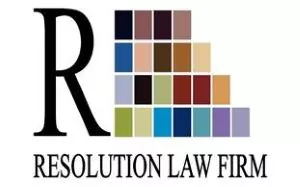- within Finance and Banking topic(s)
- with Finance and Tax Executives
- in United States
- with readers working within the Banking & Credit industries
- within Finance and Banking, Corporate/Commercial Law and Family and Matrimonial topic(s)
- with Finance and Tax Executives
- in United States
- with readers working within the Business & Consumer Services and Law Firm industries
The financial landscape in Nigeria features various institutions designed to bridge the gap in access to credit and financial services. Among these are Microfinance Banks (MFBs) and Money Lending Companies (MLCs), both of which aim to address the financial needs of individuals and businesses. While they share a common goal of promoting financial inclusion, their structures, regulatory frameworks, and operational strategies vary significantly. This article explores the similarities and distinctions between MFBs and MLCs.
MICROFINANCE BANKS
Microfinance banks are licensed financial institutions regulated by the Central Bank of Nigeria (CBN). They provide financial services such as loans, savings and fund transfers, primarily targeting low-income earners, small businesses, and rural communities. MFBs aim to promote financial inclusion by serving individuals who lack access to standard commercial banking services.
FEATURES OF MFB
- Broad Service Offerings: MFBs provide loans, savings accounts, bank transfers, and POS services.
- Regulated by CBN: MFBs must comply with CBN guidelines, including maintaining minimum capital requirements based on their category.
- Target Audience: Their main focus is on small businesses, low-income individuals, and rural communities.
- Structured Loan Plans: MFBs typically offer loans with interest rates and flexible repayment plans.
- Capital Requirements: Depending on the type of license (unit, state, or national), capital requirements range from ₦50 million to ₦5 billion.
- Geographic Reach: MFBs can operate across Nigeria, depending on their license category.
MONEY LENDING COMPANIES (MLCs)
Money lending companies are private businesses that provide short-term consumer loans at a high interest rate. They are regulated at the state level and require a money lending certificate and license to operate legally. These institutions cater to individuals or small businesses that need quick, unsecured loans.
FEATURES OF MLCs
- Simple Service Offerings: MLCs focus only on providing consumer loans without engaging in savings or other financial products.
- State-Level Regulation: MLCs are governed by state money lending laws and licensed by state agencies. For instance, in Lagos, the Ministry of Home Affairs grants the license.
- Target Audience: They cater to individuals seeking immediate financial assistance for personal or emergency needs.
- Higher Interest Rates: MLCs often charge higher interest rates due to the short-term nature of their loans and associated risks.
- Lower Capital Requirements: MLCs require a minimum share capital of ₦20 million to set up.
SIMILARITIES BETWEEN MFB AND MLB
- Financial Inclusion Focus: Both MFBs and money lending companies contribute to financial inclusion by providing credit access to individuals and businesses. They cater to low-income earners, small businesses, and underserved segments of society.
- Accessibility: MFBs and money lending companies are generally easier to approach compared to commercial banks. They often have simplified application processes, less stringent collateral requirements, and faster loan disbursement timelines.
- Private Ownership: Both institutions can be privately owned, enabling entrepreneurs and private entities to establish and operate them as businesses serving specific communities or markets.
- Use of Technology: With the rise of digital platforms, both MFBs and money-lending companies leverage technology to reach more customers. They provide digital lending platforms, mobile applications, and online services to streamline loan applications and enhance customer convenience.
- Revenue Through Interest Rates: The primary source of revenue for both institutions is interest charged on loans, although MFB can also generate profits from banking transactions such as transfer and POS deployment.
- Incorporation Under the Corporate Affairs Commission (CAC): Both entities must be registered as corporate organizations with the CAC in Nigeria to operate legally.
DIFFERENCES BETWEEN MFBs AND MLCs
- Regulatory Framework
- MFBs: Regulated by the Central Bank of Nigeria (CBN). They must adhere to strict financial regulations, including minimum capital requirements and operational guidelines set by the CBN.
- MLCs: Governed by state laws, such as the Lagos State Money Lenders Law, and are not directly regulated by the CBN. Each state determines its licensing and operational requirements. The oversight falls under state agencies like the Ministry of Home Affairs and Magistrate Courts in Lagos State.
- Licensing Requirements
- MFBs: A license from the CBN is required to operate. They are categorized into different levels (Tier 1 and Tier 2, State, and National) depending on their operational scope and capital base.
- MLCs: They require a certificate and license from state governments in each state in which they wish to operate. For example, in Lagos, a certificate is obtained from a Magistrate Court and a license from the Ministry of Home Affairs.
- Scope of Activities
- MFBs: Offer a wide range of financial
services, including Microloans, Micro-savings Accounts, Payments,
and Remittance Services.
MFBs can also grant larger loans to small and medium enterprises (SMEs) and facilitate financial inclusion through services such as mobile banking. - MLCs: Focus on money lending activities They provide short-term personal or business loans, often in the form of microloans or Buy Now Pay Later (BNPL) services.
- MFBs: Offer a wide range of financial
services, including Microloans, Micro-savings Accounts, Payments,
and Remittance Services.
- Target Audience
- MFBs: Target low-income households, micro-enterprises, and small-scale businesses that may be excluded from commercial banking.
- MLCs: Serve individuals and businesses that need quick access to credit, often at higher interest rates. They may also target salary earners.
- Interest Rates
- MFBs: Regulated by the CBN and subject to the CBN interest rate guidelines
- MLCs: Interest rates are typically unregulated, allowing flexibility, which are usually higher than MFBs.
- Capital Requirements
- MFBs: Require significant capital investment,
with the minimum capital base depending on the following
classifications:
- Tier 2 MFBs: ₦50 million.
- Tier 1 MFBs: ₦200 million.
- State MFBs: ₦1 billion
- National MFBs: ₦5 billion.
- MLCs: Have lower capital requirements, with a minimum share capital of ₦20 million.
- MFBs: Require significant capital investment,
with the minimum capital base depending on the following
classifications:
- Consumer Protection & FCCPC Approval
MFBs: The MFB is strictly regulated by the CBN, which has its own framework governing consumer rights & protection and providing mechanisms to make complaints. Consequently, a financial institution regulated by CBN, such as MFB, does not require FCCPC approval to operate.
MLCs: The MLCs, especially the ones engaging in digital lending, are mandated to secure FCCPC approval before the commencement of operation.
Microfinance Banks and Money Lending Companies both play pivotal roles in addressing Nigeria's financial inclusion gap by providing accessible credit solutions. Despite their differences in regulatory frameworks, operational scale, and target markets, they complement each other in fostering economic growth and empowering underserved populations. By leveraging their unique strengths, these institutions contribute significantly to a more inclusive financial ecosystem, bridging the gap between traditional banking services and the needs of everyday Nigerians.
The content of this article is intended to provide a general guide to the subject matter. Specialist advice should be sought about your specific circumstances.


